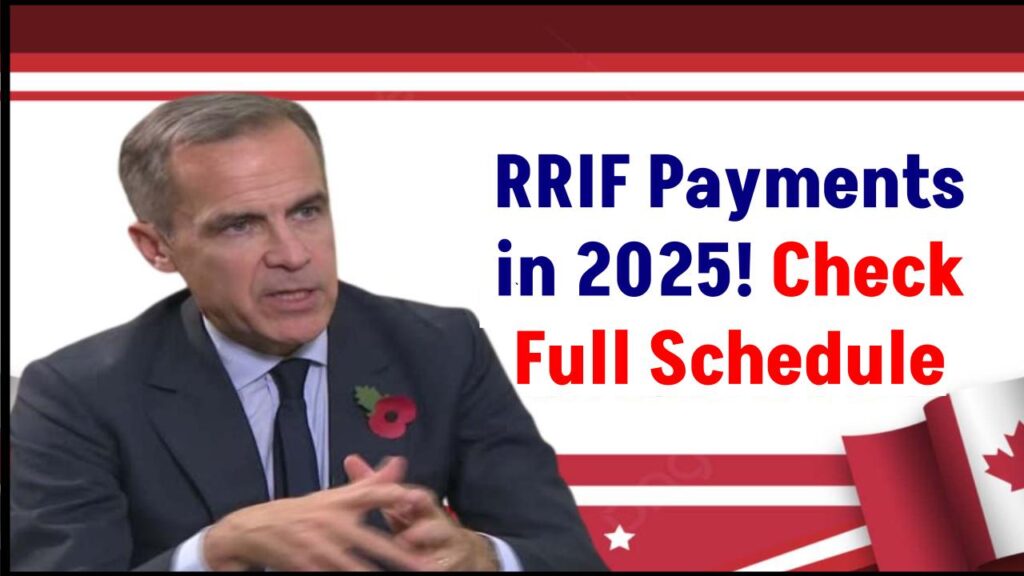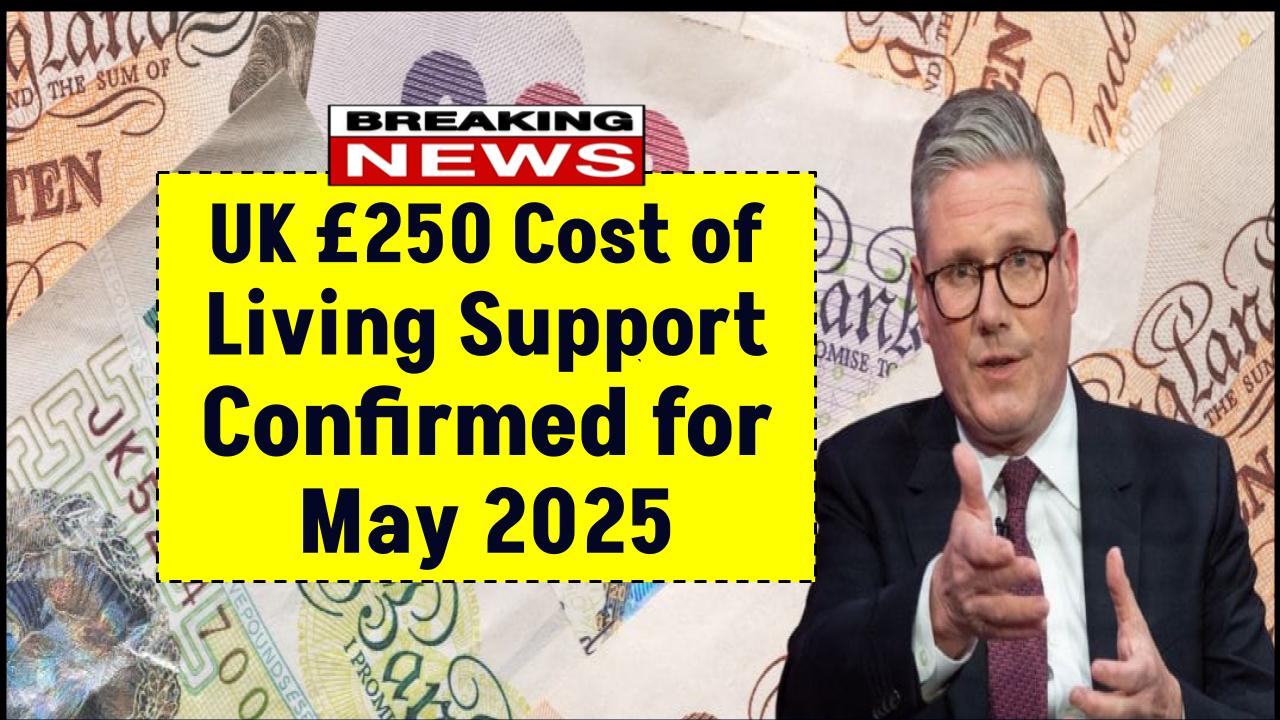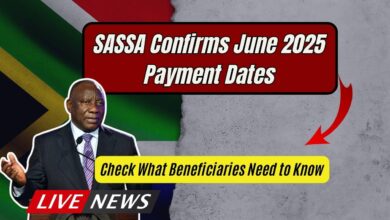RRIF Payments in 2025—Full Schedule, Withdrawal Rules, and Tax-Saving Tips
RRIF Payments in 2025: Managing your Registered Retirement Income Fund (RRIF) in 2025 is not just about following the rules—it’s about making smart financial choices that align with your retirement goals. Whether you’re new to RRIFs or have been navigating them for years, understanding how payments, tax rules, and planning strategies work can make a big difference in your long-term financial well-being.

In this detailed guide, we break down everything you need to know about RRIF payments in 2025, including the full withdrawal schedule, government rules, and actionable tax-saving tips—all explained in a way that’s simple enough for a 10-year-old, but insightful enough for finance professionals.
RRIF Payments in 2025
| Topic | Details |
|---|---|
| RRIF Withdrawal Start | Must begin by the year after the RRIF is established |
| 2025 Withdrawal % at Age 72 | 5.40% of RRIF balance at the start of the year (TD Canada Trust) |
| Taxation | Withdrawals are taxed as income; minimums are not subject to withholding tax |
| Excess Withholding Rates | 10% (up to $5,000), 20% ($5,001–$15,000), 30% (over $15,000) (Wealthsimple) |
| Key Tax Tips | Use spouse’s age, split income, contribute to TFSA, strategic timing of withdrawals |
| Official Source | Canada.ca RRIF Information |
Managing your RRIF payments in 2025 doesn’t need to be confusing or overwhelming. By understanding the minimum withdrawal schedule, applying proven tax strategies, and staying up to date with CRA regulations, you can enjoy a smoother, more tax-efficient retirement. As always, consider speaking with a certified financial planner to customize your approach.
2025 RRIF Minimum Withdrawal Schedule
Once you convert your RRSP into a RRIF, you’re required to withdraw a minimum amount annually. This withdrawal is calculated based on your age (or your spouse’s age if you choose) at the beginning of the year.
RRIF Withdrawal Percentages for 2025
| Age | Minimum % | Age | Minimum % | |
|---|---|---|---|---|
| 65 | 4.00% | 80 | 6.82% | |
| 66 | 4.17% | 81 | 7.08% | |
| 67 | 4.35% | 82 | 7.38% | |
| 68 | 4.55% | 83 | 7.71% | |
| 69 | 4.76% | 84 | 8.08% | |
| 70 | 5.00% | 85 | 8.51% | |
| 71 | 5.28% | 86 | 8.99% | |
| 72 | 5.40% | 87 | 9.55% | |
| 73 | 5.53% | 88 | 10.21% | |
| 74 | 5.67% | 89 | 10.99% | |
| 75 | 5.82% | 90 | 11.92% | |
| 76 | 5.98% | 91 | 13.06% | |
| 77 | 6.17% | 92 | 14.49% | |
| 78 | 6.36% | 93 | 16.34% | |
| 79 | 6.58% | 94+ | 18.79%–20% |
Example: If you’re 72 in 2025 and your RRIF is worth $500,000 as of January 1, your minimum required withdrawal is $27,000 (5.40%).
RRIF Withdrawal Rules Explained
When Do Withdrawals Begin?
You must start withdrawing from your RRIF in the calendar year following its creation. For example, if you opened your RRIF in 2024, your first withdrawal must occur in 2025.
Choosing Your Age or Your Spouse’s
If your spouse is younger, you can elect to use their age to determine the minimum withdrawal rate. This means lower annual withdrawals—keeping more money in your RRIF and delaying taxes.
Are Withdrawals Taxed?
Yes. All RRIF withdrawals are considered taxable income, but minimum withdrawals are not subject to withholding tax. Any amount above the minimum is taxed at:
- 10% for $5,000 or less
- 20% for $5,001–$15,000
- 30% for over $15,000
Note: These are federal rates. Some provinces may adjust rates slightly.
RRIF Payments in 2025: How to Save on RRIF Taxes in 2025?
1. Use a Younger Spouse’s Age
Choosing your younger spouse’s age for calculating the minimum reduces mandatory withdrawals. This means you pay less tax now and preserve your retirement capital for longer.
2. Split RRIF Income
If you’re 65 or older, you can split up to 50% of RRIF income with your spouse. This spreads the tax burden and can keep you both in a lower tax bracket.
3. Contribute Excess to TFSA
Don’t need all your RRIF withdrawal? Move the excess into a Tax-Free Savings Account (TFSA)—where it can grow tax-free. Make sure you have contribution room.
4. Time Withdrawals Strategically
Try to make larger withdrawals in low-income years to take advantage of lower tax brackets, or delay withdrawals when you know higher expenses or benefits are coming.
5. Claim Retirement Tax Credits
Eligible retirees should apply for:
- Age Amount Credit (for those 65+)
- Pension Income Credit (up to $2,000 for eligible income like RRIFs)
Parents Alert: $7,787 Canada Child Benefit Hitting Accounts Soon – Are You on the List?
$840 Benefit Ahead As Canada’s Tax Rate Cut Becomes Effective July 2025: Check Details!
Canada Child Benefit Payment Scheduled For July 18: Check Eligibility Criteria and Payment Details!
FAQs on RRIF Payments in 2025
What happens if I withdraw less than the minimum?
You’re not allowed to. Your RRIF provider is required to ensure the minimum is withdrawn each year.
Do RRIF withdrawals affect government benefits?
Yes. RRIF income can reduce income-tested benefits like Old Age Security (OAS) due to OAS clawback thresholds.
Can I withdraw more than the minimum?
Absolutely—but anything over the minimum is subject to withholding tax and must be reported as income.
Can I have more than one RRIF?
Yes, but each account will have its own minimum withdrawal amount. Consolidating might make tracking easier.
Can I convert my RRIF back to an RRSP?
No. Once you convert an RRSP into a RRIF, you cannot go back.







